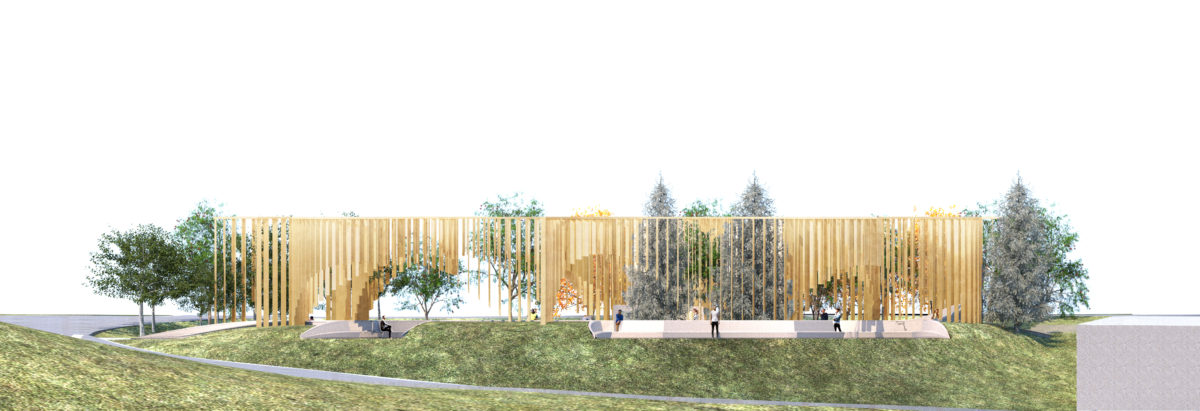
Concept of the Monument commemorating the Battle of Warsaw 1920
Design: 2020
Investor: Miasto Stołeczne Warszawa
Localisation: Plac na Rozdrożu, Warszawa
Design team: Natalia Paszkowska, Marcin Mostafa, Ryszard Rychlicki, Stefan Kielman
Collaboration: Natalia Budnik (greenery)
The Battle of Warsaw and the Polish-Soviet War are some of the most dramatic moments in the history of Poland. This is a history of people who reclaimed independence after 123 years of partition and had to stand up again to defend Poland against Soviet invasion.
It is also a history of citizens unified against existing social and political divisions. Driven by a common dream of freedom the society built up a ‘Shield’ in order to protect themselves against another loss of independence.

The location od the monument of the Battle of Warsaw within At the Crossroads Square (Plac na
Rozdrożu) creates a unique opportunity of underlining historical conception of Stanisławowska Axis and connecting functionally important elements of this structure, i.e., the Saviour Square (Plac Zbawiciela) and Ujazdowski Castle (with Łazienki and Agrykola Parks). Hence the idea of creating another, well functioning public space within the planned monument location, a sort of urban connector.


Looking for a contemporary form of commemorating the Battle of Warsaw, the designers proposed a construction in the shape of a pavilion evoking the idea of a „Shield”. The square has been symbolically divided into a sequence of smaller spaces, sectioned off by plant pots, with benches surrounding these small squares.
Steel structure of the pavilion encircles and links particular small squares, evoking an idea of a joint resistance – „the Shield”. The histories of particular social groups and micro-histories of chosen heroes of the Battle are conveyed through inscriptions scattered on the benches.
The central part of the space is dedicated to the main story of the Battle, with the place designated for laying wreaths.

The sequence of squares allows the visiting groups for meetings and conversations – each of these spaces is an agora of a kind. Ipso facto, the monument becomes an architectural vehicle for retelling the history, referring to one of the most archetypal and basic usages of architecture as a tool for building a community.
The inhabitants of nearby „Latawiec” housing estate, who are everyday users of Plac na Rozdrożu, will regain its social character by becoming its hosts and guardians. Such monument has a chance of becoming a live, in the sense of social interaction, Memorial place.
People’s presence on the Square will symbolically fill the void left by those who died leaving the message for future generations: to take responsibility for defending independence and freedom, to preserve and keep in memory our heroes killed in action.

Tall greenery constituting a part of the monument will create a buffer against noisy streets surrounding the Square and an aerated, acoustic barrier encouraging people to stay in this place for a longer time.
A dynamic narrative obtained through densely planted native trees alludes to natural Polish landscapes and to the trees lining alleys meeting at the Square.
Planted trees will contribute to the Monument’s character all year round – during anniversary ceremonies red berries of rowan trees will appear, in autumn, the leaves of maples and mountain ashes will change their colour, and in winter, oaks and hornbeams, bare of leaves, will contrast with the green of spruce trees.
Warsaw residents can celebrate anniversaries by planting more trees, a project which will actively engage them in the cultivation of a collective history of their city.
The development of the greenery, the growth of trees will symbolically create part of awareness of the place – the trees will grow, mature, get older, becoming a sort of time marker for successive generations of people visiting this place.


